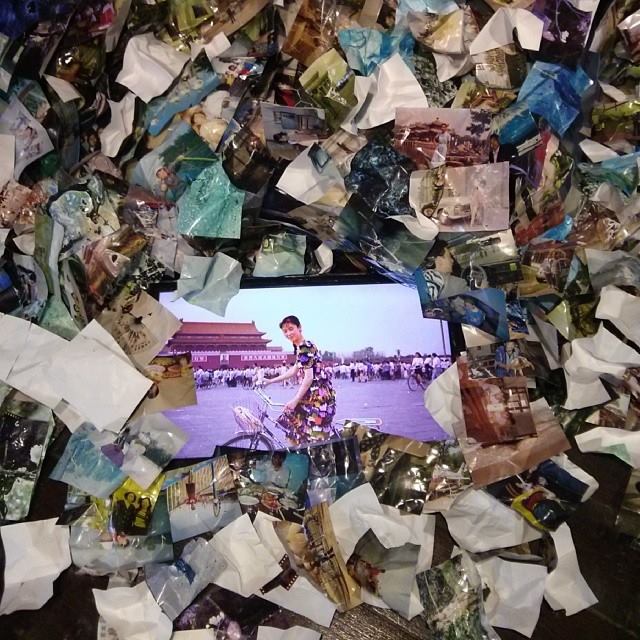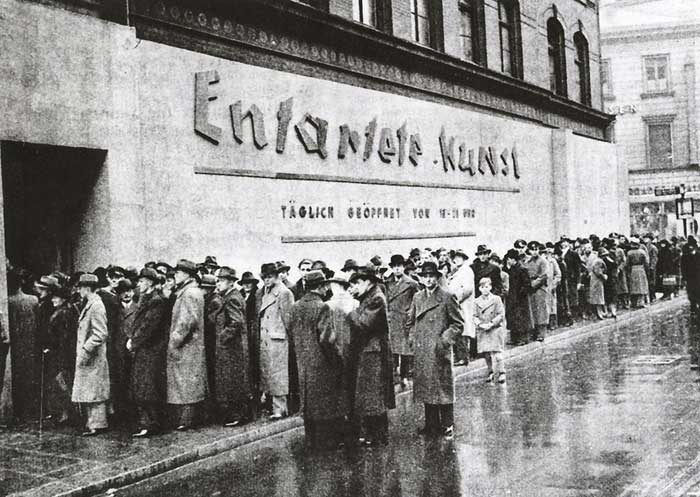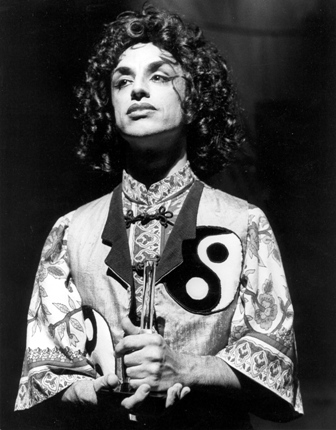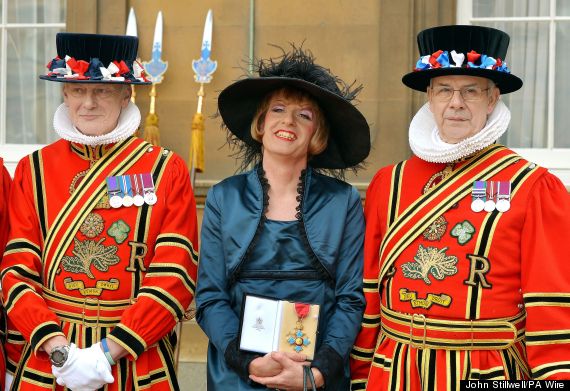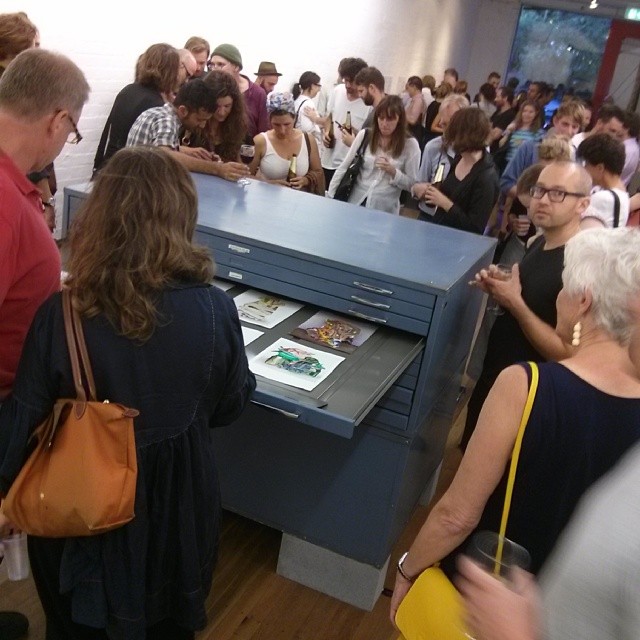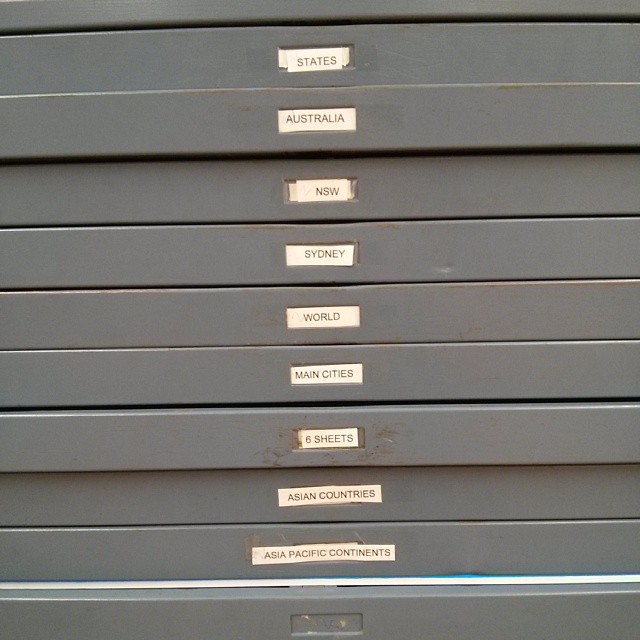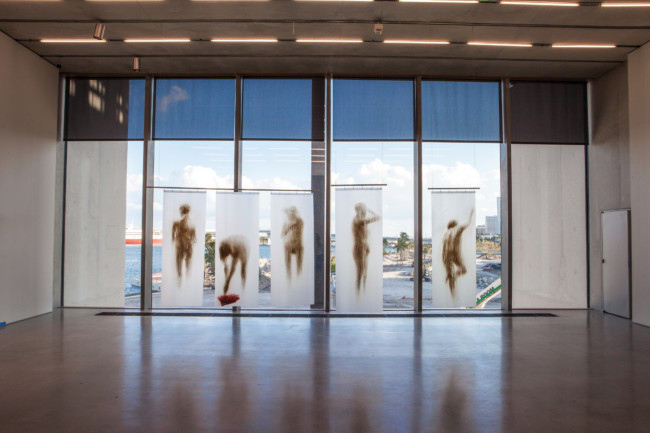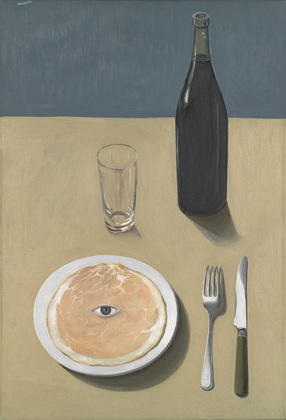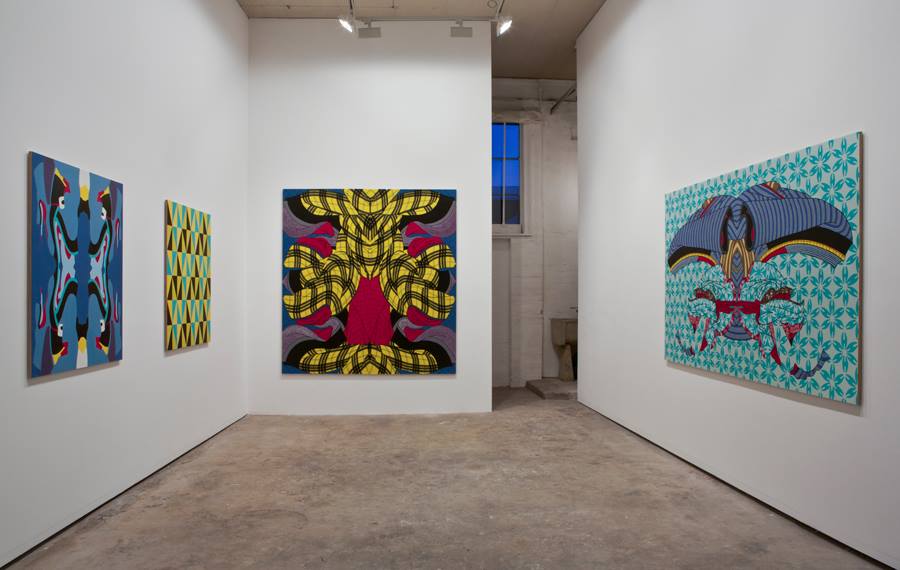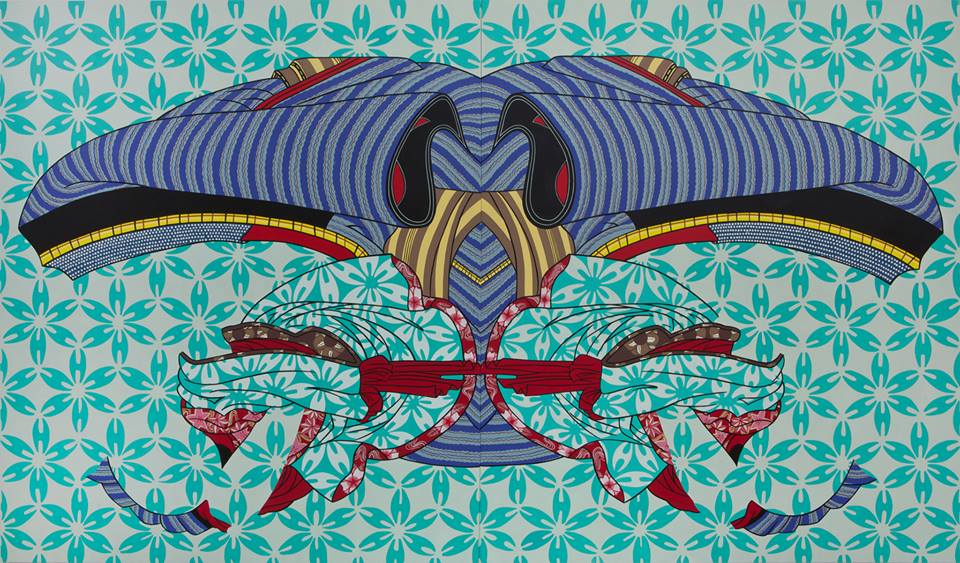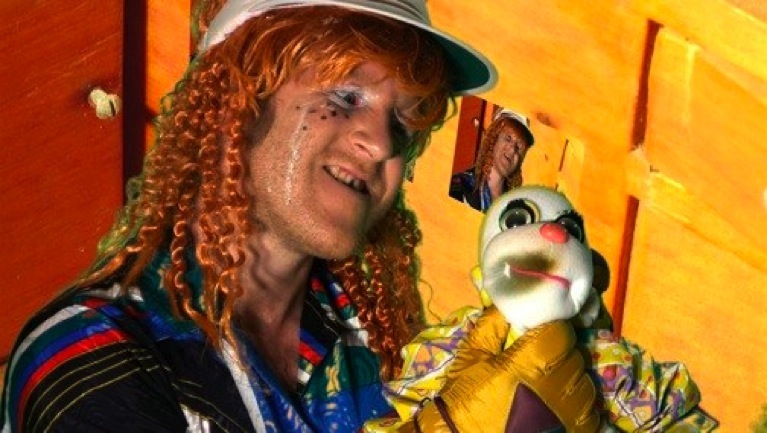This exhibition at UTS Gallery, curated by Holly Williams and Chris Gaul, brings together eleven artists concerned with the information we all leave in our wake, and reveals many different possibilities as to what can happen to this information once it has been discarded by its original creator or user. There are many anonymous and unwilling subjects portrayed in Trace Recordings. In some works, the audience unwittingly becomes the subject of the piece, as the work is activated through looking. In the works of Denis Beaubois, who uses low-fi materials including CCTV screens and mirrors, the viewer’s image is sucked into an infinite vortex. Memory 2013, by Shinsungback Kimyonghun, gradually forms a morphed portrait of everyone who has stood in front of it, via a tiny camera which records and superimposes likeness after likeness onto the screen.
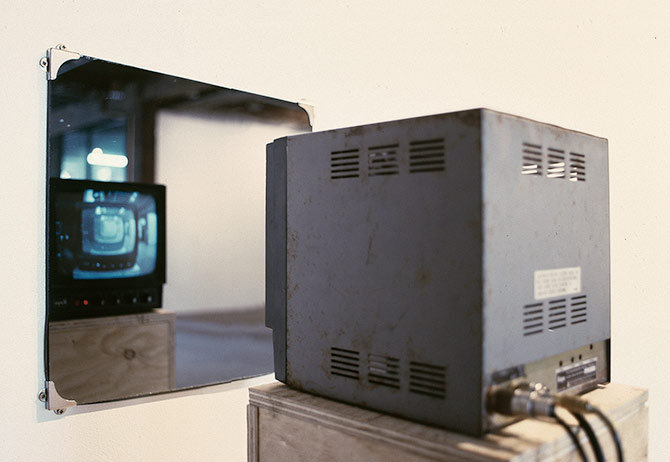

Several artists in the show use anonymous and apparently unconsenting subjects to demonstrate the possibilities of surveillance culture. Paolo Cirio’s Street Ghosts turns the subversive nature of street art on its head, by reproducing life-sized images of people captured on Google Street View at the site where the image was originally taken. A fleeting, inconsequential moment in someone’s day is captured, providing a reminder about the gargantuan amounts of visual information (potentially featuring us) available online for anyone to use at will. Control has shifted to those who choose to seek and re-present this information.
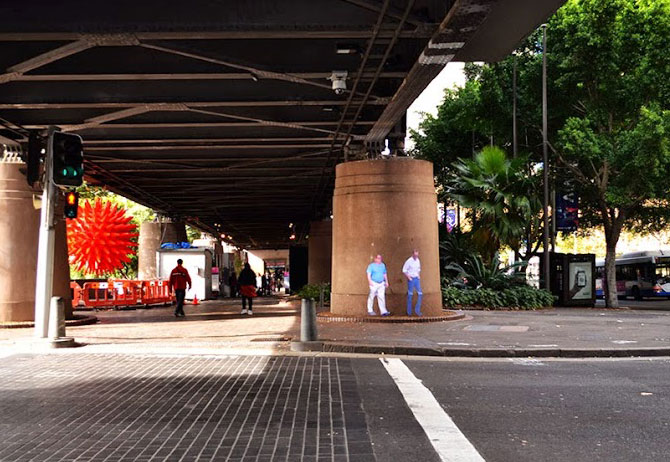
One such person is Heather Dewey-Hagborg, whose work Stranger Visions 2012 uses recent innovations including 3D printing to construct portraits of people based on DNA found on discarded cigarette butts and chewing gum. These uncanny sculptures, with their life-like features abruptly ending at the hairline to reveal negative space behind, reveal much and very little about the person simultaneously. A small vitrine below each ‘head’, as well as containing the object from which the DNA was retrieved and a photograph of its original location, lists the subject’s genetic ancestry (raising questions such as the potential health implications that could be measured). From this quite specific information, still infinite conclusions could be reached about her/his life.

There are also many anonymous subjects of Benjamin Gaulon’s work 2.4Ghz, a small screen with antenna which tunes into unencrypted video on this particular frequency, common in baby monitors. Visitors are invited to borrow the work, exploring their city via its residents who have unknowingly left themselves open to surveillance via a profusion of these devices. Even as the object sits idle in the gallery, the image on its screen flits between images of unknown sites, where people move around unaware of being watched, often from the upper corners of rooms.
In contrast to this excess of broadcast noise, there is an eerie beauty to the work of Trevor Paglen, whose photograph They watch the moon 2010 depicts a secret NSA listening station in West Virginia, USA. This complex is located within a National Radio Quiet Zone, meaning that WiFi, FM radio and other transmissions are banned in order for the organisation to capitalise on the phenomenon of ‘moonbounce’, where communication signals can be captured and listened to post-broadcast as they return to earth. Paglen has also harnessed the moon’s power, using its light for this long-exposure image. The station appears as a massive glowing target in the middle of the wilderness, its clusters of satellite dishes un-camouflaged, much like the messages they intend to intercept.

Another artist examining the surveillance work of the US government is James Bridle. The subject of Bridle’s work is the Disposition Matrix, a tool designed to find connections within intelligence and surveillance information collected by the government, the alarming result being the automated generating of lists of targets for drone strikes. A Quiet Disposition 2013 is, in turn, a system developed by Bridle to search online for reference to those involved with drone strikes and the Disposition Matrix. The resulting garbled text exposes the random and incorrect nature of the conclusions that can be drawn from such an automated system – it may be quiet but is potentially deadly.
Adam Harvey directly invites the viewer to interact with modes of 21st century surveillance. His CV Dazzle Workshop 2010 teaches the audience about the possibilities of camouflage makeup for subverting facial recognition technologies. The black blocks placed geometrically and sporadically over the face are not only effective in distorting digital understanding of who is being watched, but also resemble war paint designs, imbuing the wearer with the feeling that they are arming themselves against this force of surveillance. In this sense, this work is not only active but activist, and provides an effective curatorial counterpoint to the more sinister works in the exhibition.
An important aspect of Trace Recordings is the wall texts accompanying each work. It is arguable as to whether reading wall texts should be necessary in exhibitions in general, however in the case of this show it enhances understanding of the pieces, and in this context it feels prudent – like reading the terms and conditions before consenting to yet another incursion into our private lives by some unknown entity. Trace Recordings drags Orwell screaming into 2013.
Trace Recordings – Surveillance and identity in the 21st century
22 October–29 November 2013
UTS Gallery, Sydney
http://www.tracerecordings.net/
All images courtesy UTS Gallery, Sydney.
